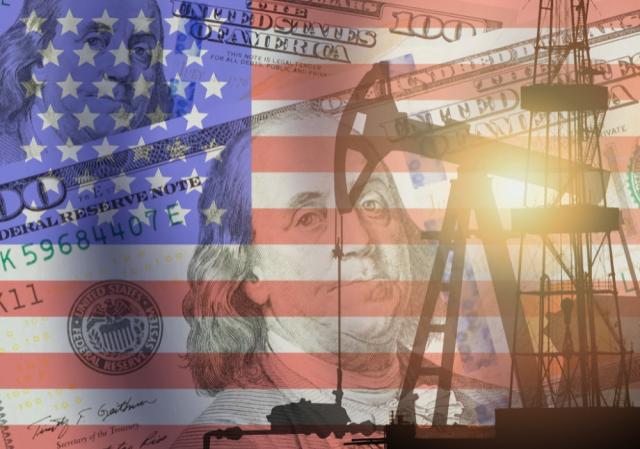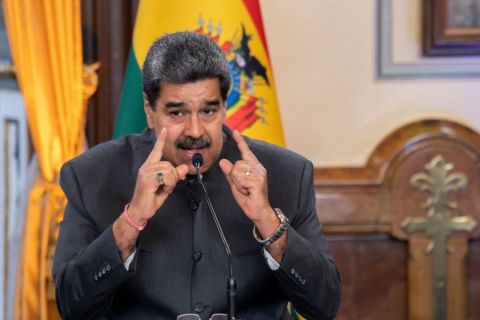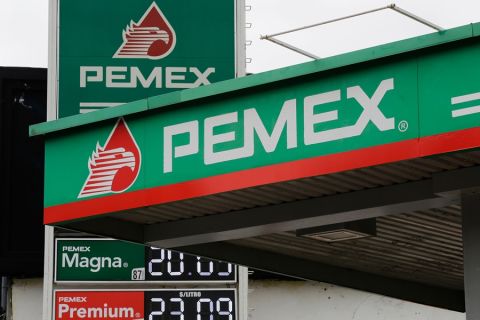
(Source: Shutterstock.com)
Following the Main Street Lending Facility’s expansion to larger companies and a move to buy up to 1 MMbbl of crude for the emergency petroleum reserve, U.S. Energy Department officials say they plan to continue efforts to help struggling oil and gas producers, especially the small ones.
Speaking this week to members of the Texas Alliance of Energy Producers, Assistant Secretary for Fossil Energy Steve Winberg said if Congress appropriates money for the department, its intent will again be to purchase oil from U.S. producers. The department’s initial plan to buy up to 30 MMbbl for the Strategic Petroleum Reserve (SPR) failed to secure funding. Congress is currently working on another stimulus package.
“That proposal was for small- and mid-sized producers because we recognized that it was those people that needed the liquidity,” Winberg said. He later added “It was mischaracterized by some members of Congress [as] a bailout for Big Oil, and that just absolutely was not the case. It was small producers, small and mid-sized producers, and it will be again, assuming that Congress appropriates money.”
If legislators don’t, the department will likely send out another request for proposals, setting aside a minimum for small independent producers, for companies wanting to store oil in the SPR. After failing to secure appropriations from Congress, the department opened the SPR for storage, issuing a solicitation for up to 23 MMbbl of oil.
“We are about 35% full on that 23 million barrels, and we expect that we will fill those 23 million barrels by the end of June,” Winberg said.
As for the 1 MMbbl oil purchase, he said the department will receive bids until May 27 and plans to award contracts May 29. Following these moves, the department will have about 53 MMbbl of capacity remaining.
Companies of all sizes have been coping with lower oil prices caused by a supply-demand imbalance fueled by the global COVID-19 pandemic, which has slowed travel. To survive, oil companies have drastically reducing spending, cutting production, delaying projects and laying off thousands of employees.
“The U.S. has taken the biggest hit, and we are well aware of that,” said Ted Garrish, assistant secretary for international affairs.
The International Energy Agency (IEA) estimates the U.S. will be the biggest contributor to global supply reductions compared with a year ago. U.S. production could be 2.8 MMbbl/d lower than it was at year-end 2019, according to the IEA’s May Oil Market report.
The department seeks guidance on how it and the administration can help the industry, Garrish said before pointing out slowly improving market conditions.
Countries across the world are easing lockdown restrictions aimed to curb the spread of the virus. WTI oil prices, which sank to -36.98/bbl in April, have rebounded to about $34.45.
The massive production cutbacks are also easing storage concerns as the supply glut declines.
Energy Information Administration data showed U.S. crude inventories down by 5 MMbbl last week. Stocks at Cushing, Okla., fell by 5.6 MMbbl.
The gains could be temporary. Some analysts say more oil cuts are still needed globally to improve the supply and demand balance. In some parts of the world, eased restrictions have already led to renewed outbreaks of COVID-19.
Meanwhile, oil companies continue to adjust operations, while some have also taken the government up on its offers.
“We’ve had a number of companies avail themselves of the Paycheck Protection Program [PPP]. That’s just been a godsend to many companies,” said Karr Ingham, petroleum economist and executive vice president of the Texas Alliance of Energy Producers. “I think there’s less understanding about the Main Street Lending Program and how that might apply to energy companies and in particular, smaller oil and gas independent companies.”
Established by the Federal Reserve, the program supports lending to small- and medium-sized businesses that were in sound condition before the pandemic. It operates via the Main Street New Loan Facility, Main Street Priority Loan Facility and the Main Street Expanded Loan Facility.
Winberg, who encouraged people visit the website for more information on the program, said it has been expanded to allow larger companies. Most oil and gas companies have subsidiaries with less than 15,000 employees, he said. “I think there are opportunities there, if it’s a subsidiary, to utilize the Main Street Lending Program.”
In late April, the Federal Reserve extended the program—designed to support small and medium-sized businesses unable to access the PPP or need more help—to firms with 15,000 employees and $5 billion in revenue, compared to the initial 10,000 employees and $2 billion.
Ingham voiced appreciation for the efforts.
“As you know, the industry—from the independent oil gas community to the larger organizations—have not been beating down the door for special treatment for oil and gas companies,” he said. But “we certainly want to make sure that we’re not left out or excluded because we are in the oil or gas community” from provisions the federal government has established to help the economy overcome the current crisis.
Small independents, he added, and lower producing wells account for the “lion’s share of the well count,” though not production. “If they were economically viable going into the coronavirus, we’d like them to come out the other side of that, with the same opportunity to continue to operate.”
Energy Department officials also addressed a few other topics, including mandatory production cuts and those Saudi tankers.
Mandated Cuts: The department does not see a need for mandatory cuts of any type, Winberg said, noting the U.S. has done “more than our share” courtesy of market forces. “I know the Russians have been trying to deal with the Railroad Commission in Texas, and they were very disappointed with the position that was taken by them. Our feeling is that we have a market mechanism here.”
Saudi Tankers: Despite an oversupply of oil, several Saudi tankers loaded with oil are starting to arrive at the U.S. Gulf Coast after at least a 30-day journey from Saudi Arabia. That oil was purchased by U.S. companies after the OPEC+ deal fell apart in April and with expectations, at the time, that the Saudis would increase production, he said. That didn’t happen.
While some of that oil doesn’t have a buyer yet, Winberg said “I think we are going to certainly see some of that oil come onto our shores and go into refinery operations. But U.S. companies own that oil.”
Recommended Reading
US Orders Most Companies to Wind Down Operations in Venezuela by May
2024-04-17 - The U.S. Office of Foreign Assets Control issued a new license related to Venezuela that gives companies until the end of May to wind down operations following a lack of progress on national elections.
EU Expected to Sue Germany Over Gas Tariff, Sources Say
2024-04-17 - The German tariff is a legacy of the European energy crisis that peaked in 2022 after Moscow slashed gas flows to Europe and an undersea explosion shut down the Nord Stream pipeline.
Pemex to Remain Fiscally Challenged for Mexico’s Next President
2024-04-16 - S&P Global Ratings said Pemex will remain a fiscal challenge for the country’s next president, adding that continued cautious macroeconomic management was key in its ratings on both Mexico and Pemex.
Yellen Expects Further Sanctions on Iran, Oil Exports Possible Target
2024-04-16 - U.S. Treasury Secretary Janet Yellen intends to hit Iran with new sanctions in coming days due to its unprecedented attack on Israel.



